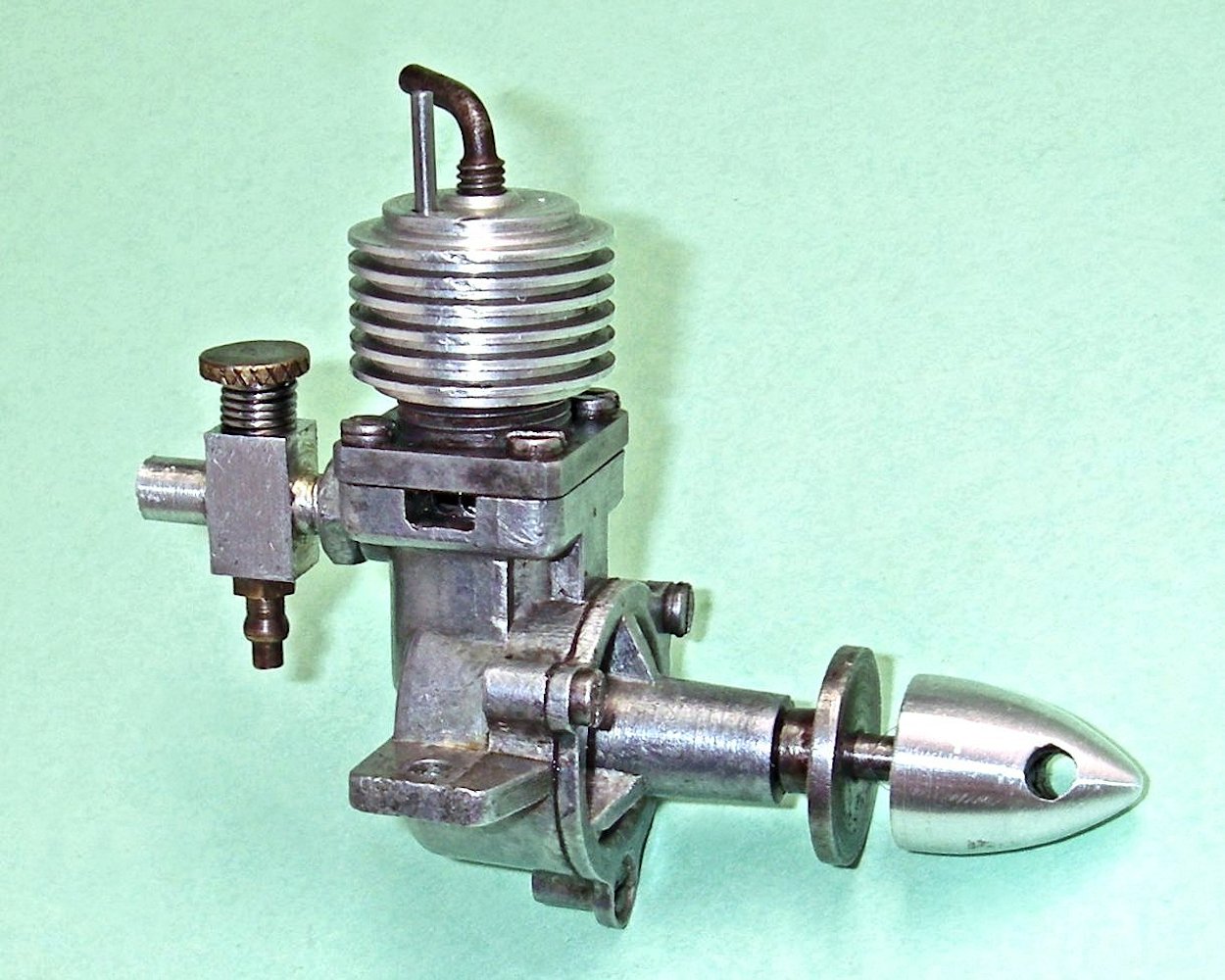
|
|
From the Editor - September 2020
I'm still keeping my head well down, because we are starting to see a new wave of COVID infections due to the distressing number of people who are choosing to ignore the doctors and abandon any effort to help in the containment of this pandemic. Some of my friends are among them. If it was only their own well-being that was at stake, that would be their choice, but it isn't - sadly, they're infecting others who are still making the effort. They're also burdening the medical support system on which we all depend. I'm choosing to stay well out of harm's way.........I don't want to contribute to the problem. Hopefully there will be better times ahead - we just have to be patient. Beginning with the usual discussion of site usage figures, the numbers for August 2020 were quite encouraging. The total of 493,083 hits for August was up a little from the July total of 448,194, as was the number of visits at 4,349. Even more positively, these visits came from 2,314 unique visitors, a nice increase over the July total of 1,901. The site seems to have gained a few new visitors during the month! Oddly enough, those visitors only accessed a total of 18,452 pages - a huge drop from the July total of 33,230 pages. I suppose this simply reflects the fact that many visitors each month are now "repeaters" who have already browsed the site and read the earlier articles of interest to them. As time goes by, the new articles are bound to draw the most attention, and there are only one or two of them each month. So the monthly page numbers are bound to go down.
The mailbox continued to be active during August. I heard directly from quite a few of you, including (in no particular order) Peter Valicek, Maris Dislers, Dave Jones, Kevin Richards, Ken Croft, Brian Cox, Bob Christ, Tom Coletta, Chris Ottewell, Sammy Rossiter, Goran Milosavljevic, Don Sohn, Alan Strutt, Luis Petersen, Sergio Montes, Ed Holly, Don Imre, Randy Brown, Min Liu, Neil McRae, Alan Rose, Steve Foster, Matthew Barnwell, Miles Patience, Hugh Blowers, Rob Jenkins, Paul Venne, Ricky Bould and Tim Dannels. Apologies to anyone whom I may have inadvertently missed in the crowd! The blog site has also continued to justify its existence by generating a small but steady flow of relevant traffic - thanks for that.
As Treasurer of SAM 35, Kevin is the man responsible for handling sales of these little gems. To ascertain the availability status of these engines and to purchase your own examples, you should contact Kevin at treasurersam35@gmail.com. At the time of writing, all three models remained available, but that won't last! The SAM engines come in three displacements - 0.35 cc, 0.5 cc and 0.75 cc. All are twin ball-race sideport diesels of the familiar Mills pattern apart from the ball-races. The 0.75 cc version out-performs the Mills .75 model by some margin, although it retains all of the Mills' fine handling and running qualities. I have yet to try the others, but I have no doubt that they will prove to be equally good! The number of these little beauties is limited, so get 'em while they last!
The track was heavily used on both days and proved to be very well laid-out. The contest took the form of a "nominated speed" event in which each contestant had to declare a speed which he felt his car should achieve. The actual contest runs were timed, with positions being determined by the differences in km/hr between the nominated and actual speeds. A fun competition format in which consistency is rewarded and everyone has a chance! The highest actual speed achieved was 180.58 km/hr by David Giles with his 3.5 cc car.
It's always nice to hear from someone who has found the home construction drawings available on this site to be of some use. During August, I heard from Rob Jenkins, who has completed a batch of 6 examples of the Wilsco 79 diesel from the plans which are available here thanks to the kindness of Ken Croft. Well done, Rob, and thanks for keeping us informed! Last month I pointed out that the Gallery was closing in on 200 entries. I can now report that the next entry will hit the 200 mark, because I've added two more entries over the past month, bringing the total to 199. One of the new entries is particularly noteworthy, because its subject is one of the most obscure and ephemeral British diesels of them all - the E.P.C Moth of 1950. A combination of good The other new entry relates to the 1.48 cc MK-16 diesel from 1955 Russia. That engine is covered rather briefly in my recently-published article on model engine development and manufacturing in Russia, but a full analysis and test were not featured in that text. I have since subjected the engine to a full examination and bench test, the very positive results of which will appear in due course on this website. I intend to include a full test of the MK-16's successor, the MK-17, in the same future article. This discussion about the Gallery highlights the unfortunate fact that its utility seems to be poorly understood by some readers. In fact, the top toolbar which appears on all the pages in this website appears to be under-utilized or overlooked by some folks. I say this because I continue to receive periodic inquiries about engines for which full documentation is readily available here.
To go directly to articles on this website, click on the "Engine Articles" link in the top toolbar. This brings up an alphabetical drop-down listing of every engine article which appears here. Click on the article, and up it comes! I simply can't understand why some folks still claim to be unable to find their way to the engine articles on this site - I honestly don't see how much easier I could make it! Anyway, please check the suggested links before coming at me with questions to which answers are already available on line. Another problem that people seem to have is viewing the images in these articles at a larger size. It's dead easy - all that you have to do is right-click on an image to see a drop-down menu. The very first option is "View Image". Click on it to see the image at a considerably larger size. You can also copy images using this feature.
I've been doing some more research on the Vulture lately with a view towards updating my existing article. I have always believed that all versions of the Vulture used a steel piston and rod with a ball-and-socket small end connection. However, I recently came across a very clean and seemingly little-used example of the Mk. III "Bald Headed" Vulture which had a conventional gudgeon (wrist) pin. The piston and rod are still of the standard hardened steel pattern, but the rod's upper ball end is drilled through to accommodate the gudgeon pin. The piston has thicker walls to provide bosses for the pin. This must have been done at the time of manufacture before hardening - you couldn't drill the hardened steel factory rod. My question is - does anyone else have a Vulture with a hardened steel piston, a gudgeon pin and a hardened steel rod (alloy rods don't count) instead of a ball-and-socket piston/rod connection? It's just a matter of removing the backplate to check. If (and only if) you have While you have that backplate out, please check the cylinder bypass flutes. I'm interested in learning how many Mk. III Vultures featured the modified cylinder with multiple bypass grooves as in the accompanying image of one of my examples. These modifications definitely look to me like factory efforts as opposed to owner interventions. Few owners could produce that cylinder! These may well be late improvements by the manufacturer to pull the engine up a bit in performance and longevity terms. But am I right? Who else has examples displaying these features? Again, if you don't, please don't respond - I only need to hear from you if you do have such examples. Serial numbers are always highly relevant in such cases. Turning now to this month's lead article, it's been a while since we headed back Down Under to my own birthplace of Australia, so I thought that it was time to remedy that situation. The concept of this article stemmed initially Inquiries directed to my good Aussie mate Maris Dislers started Maris off on a search for on-the-spot information on my behalf. We found that there was considerable enthusiasm for seeing this article come to fruition, resulting in everyone who was approached helping to the very best of their abilities. In the end, I had enough information to write an article which went well beyond being a review of the Tempest to encompass an overview of the Australian model racing scene from the end of WW2 into the early 1950's. So this month you'll be able to read my review of the Tempest racing engine and its Australian competitors. There were a number of really creative people involved in both control line speed and tether car racing in Australia at that time, and you'll meet many of them in this month's article. I hope that you'll find it as interesting as I did when pulling all the pieces together! Big thanks to Maris Dislers for his invaluable work "on the ground" in Australia and also to his many helpful informants there. I hope that the piece constitutes an adequate repayment for the effort put in by Maris and his Aussie contacts.
As if that wasn't enough new material for the month, there's also a significant addition to the existing article on the Reeves 6 cc spark ignition engine from 1940's England. This takes the form of a previously-overlooked test of the engine by none other than Peter Chinn. When we collaborated on the original article, neither Maris Dislers nor I were aware of the existence of this test! The reason for our ignorance is that it predated the mid-1949 commencement of Chinn's long-running test series for "Model Aircraft" magazine by some months, appearing as just part of one of his general articles on model engines. This must be one of Chinn's earliest published tests of them all - wonder if there are any more pre-series tests hiding in the weeds?!?
Turning now to next month, the new tests cited above seem to have put us on course for a trip back to early post-WW2 England! So next month I plan to stay in my teenage stomping grounds by looking at an almost forgotten British model engine with a most interesting and unusual story. I'll be reviewing the previously-mentioned E.P.C. Moth 0.85 cc diesel of 1950, an engine whose origins are far more complex than has generally been assumed. The Moth made a very brief appearance on the market in early to mid 1951. However, that marketing phase was more or less an afterthought in the engine's history, which actually had its beginnings in late 1949. Despite an extremely low price which undercut all of its contemporary competitors, the engine failed to make I never expected to be in a position to write about the Moth with any authority. It was only the kindness and cooperation of a few good friends like Maris Dislers, Kevin Richards and in particular Miles Patience that has placed me in a position to throw some light upon the unexpectedly interesting story of the E.P.C. Moth. Such assistance is appreciated more than I can say - I can't keep this website growing on my own! I think that about does it for this edition. All being well, I'll be back to you with another issue on or about October 1st, 2020. Meanwhile, please accept my continuing best wishes for making it safely through the present pandemic situation. The heady aroma of diesel fumes, sparkie smoke or burning nitro may be a bit more challenging to experience at this time, but I hope that at least some of you find an opportunity to get your fixes! Take care and stay well - pay attention to the doctors rather than the politicians and their supporters!! Cheers, Adrian Duncan British Columbia, Canada ___________________________________ Note regarding material to be found on this site - unless specifically otherwise noted, all images and text which appear on this site are my own work, and I hereby assert my right to be recognized as the originator of this material. For the record, this material is made freely available to all upon two firm conditions:
Adrian C. Duncan British Columbia, Canada
|
| |
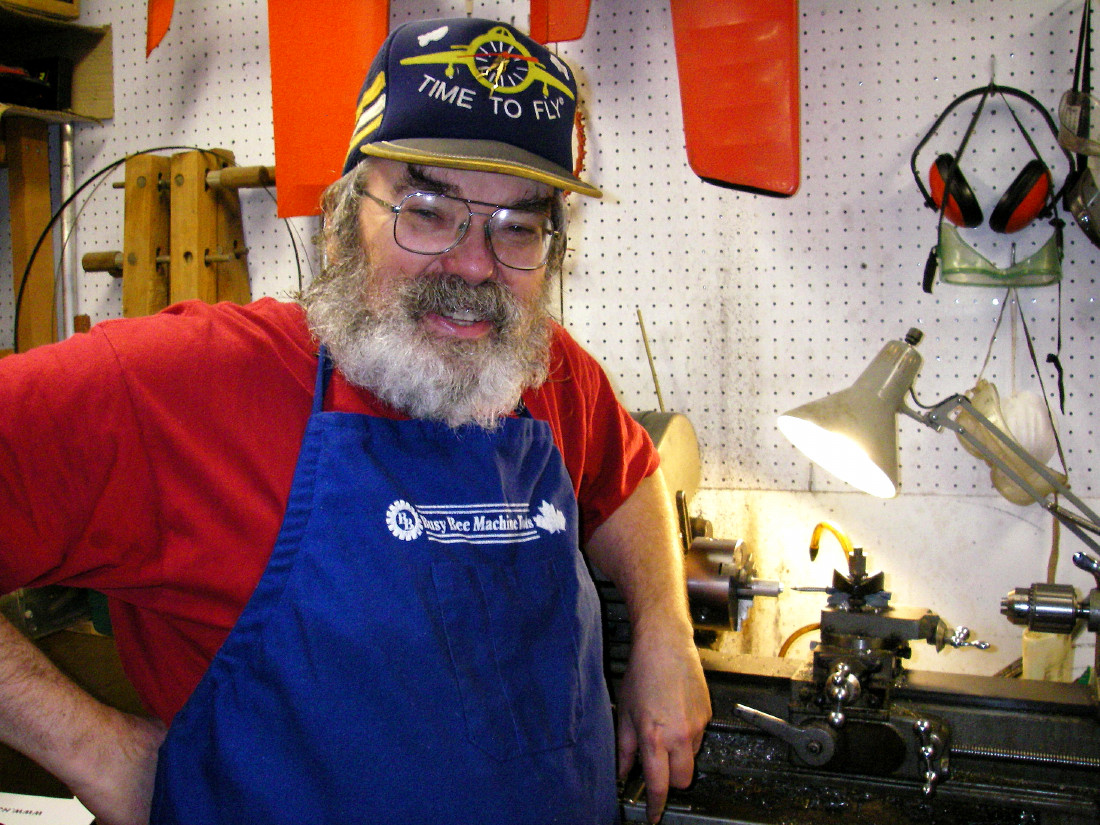
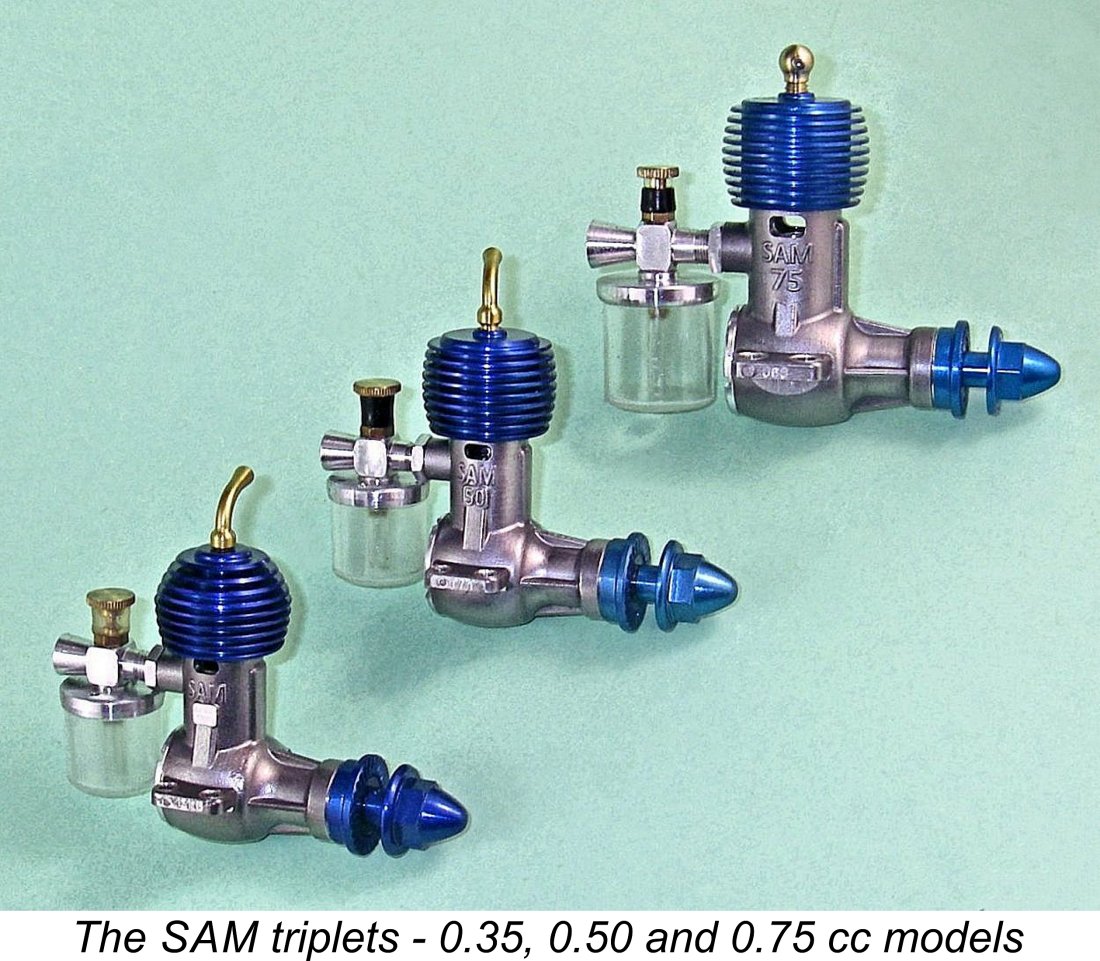 A welcome arrival in my postal mailbox during August was a complete set of all three SAM sideport diesels from Kevin Richards. These lovely little engines were made in Ukraine by Alexandr Matusha on behalf of
A welcome arrival in my postal mailbox during August was a complete set of all three SAM sideport diesels from Kevin Richards. These lovely little engines were made in Ukraine by Alexandr Matusha on behalf of 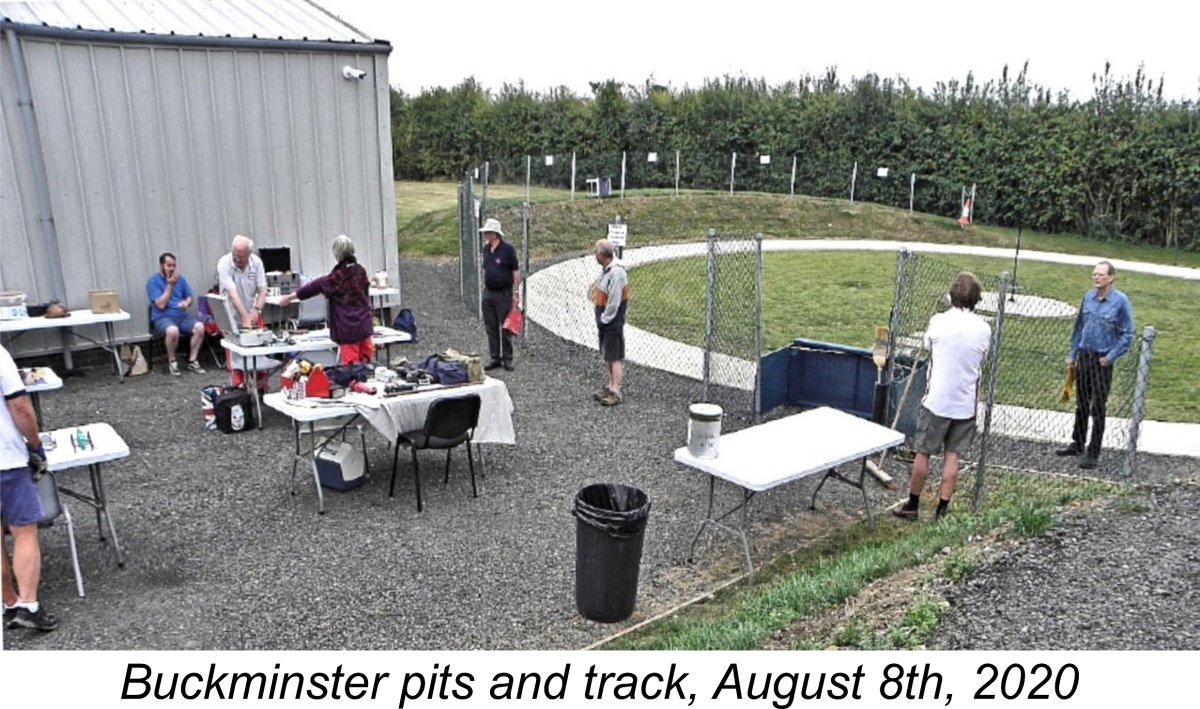 Kevin also provided me with a report from Steve Betney on the inaugural tether car meeting held on the BMFA's superb new track at Buckminster in Leicestershire, England. This event took place on the weekend of August 8
Kevin also provided me with a report from Steve Betney on the inaugural tether car meeting held on the BMFA's superb new track at Buckminster in Leicestershire, England. This event took place on the weekend of August 8 A couple of cars appeared which were built around prototypes of Alex Phin's forthcoming 2.5 cc twin-shaft tether car engine/chassis combination. Should be a great way to get into this type of racing, and now that the Brits have such a fine facility, let's see it get used!! If I lived in Britain, I'd be there!
A couple of cars appeared which were built around prototypes of Alex Phin's forthcoming 2.5 cc twin-shaft tether car engine/chassis combination. Should be a great way to get into this type of racing, and now that the Brits have such a fine facility, let's see it get used!! If I lived in Britain, I'd be there! 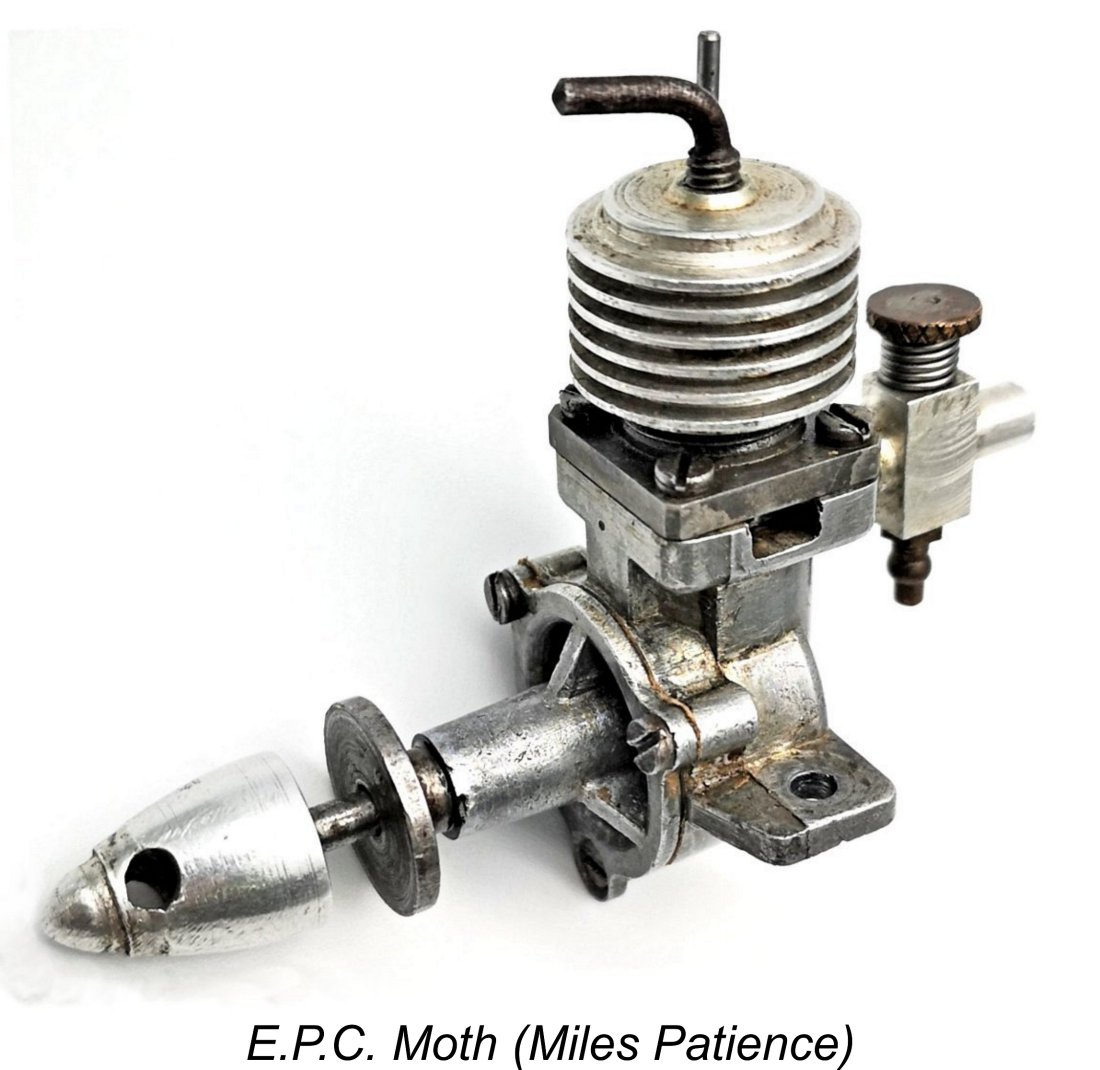
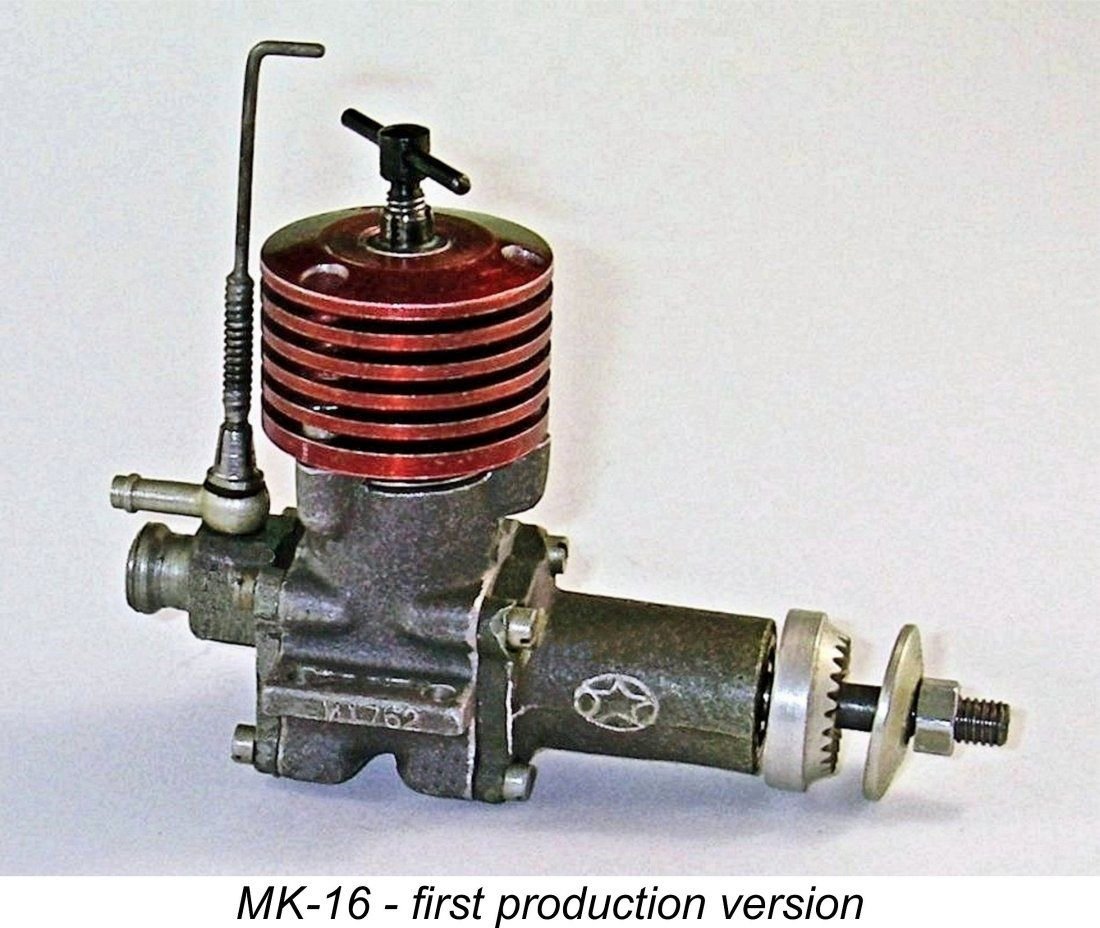
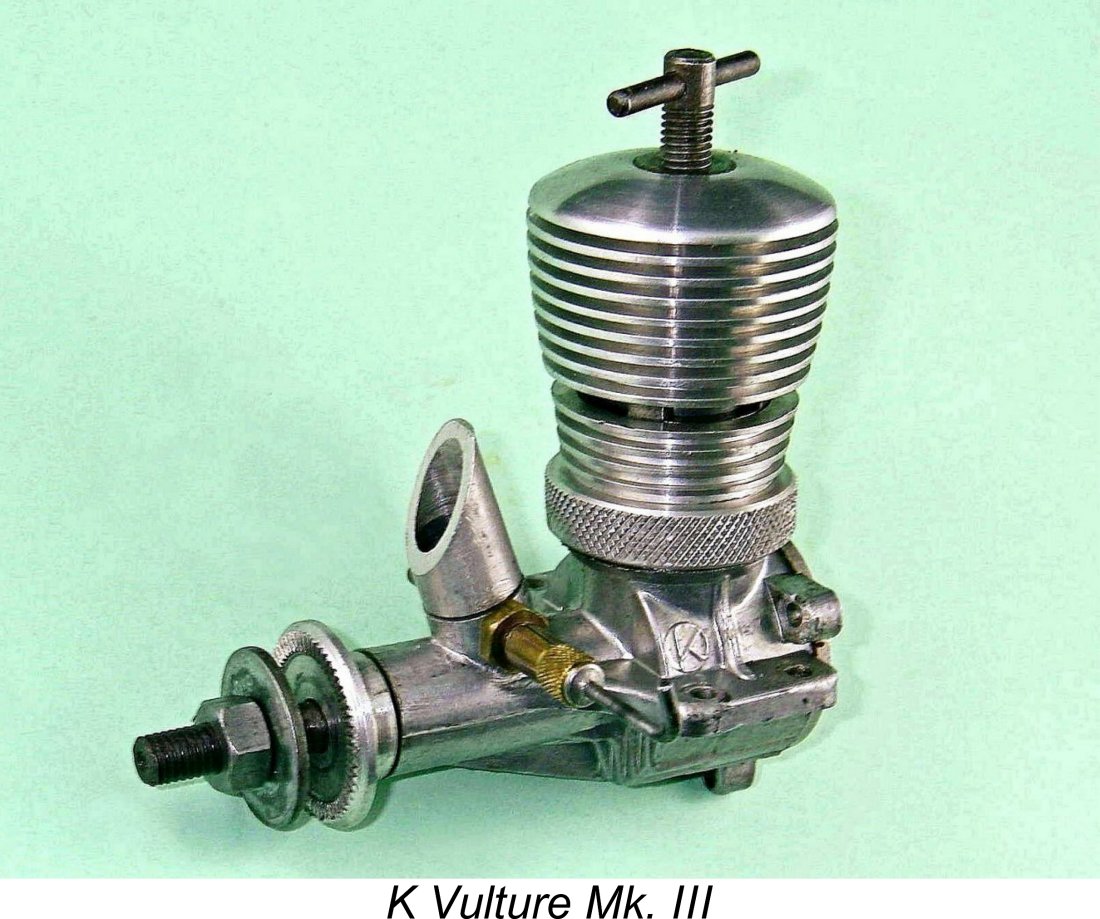 And now for something a little ususual - a request for help! Some of you may have read my article on the
And now for something a little ususual - a request for help! Some of you may have read my article on the 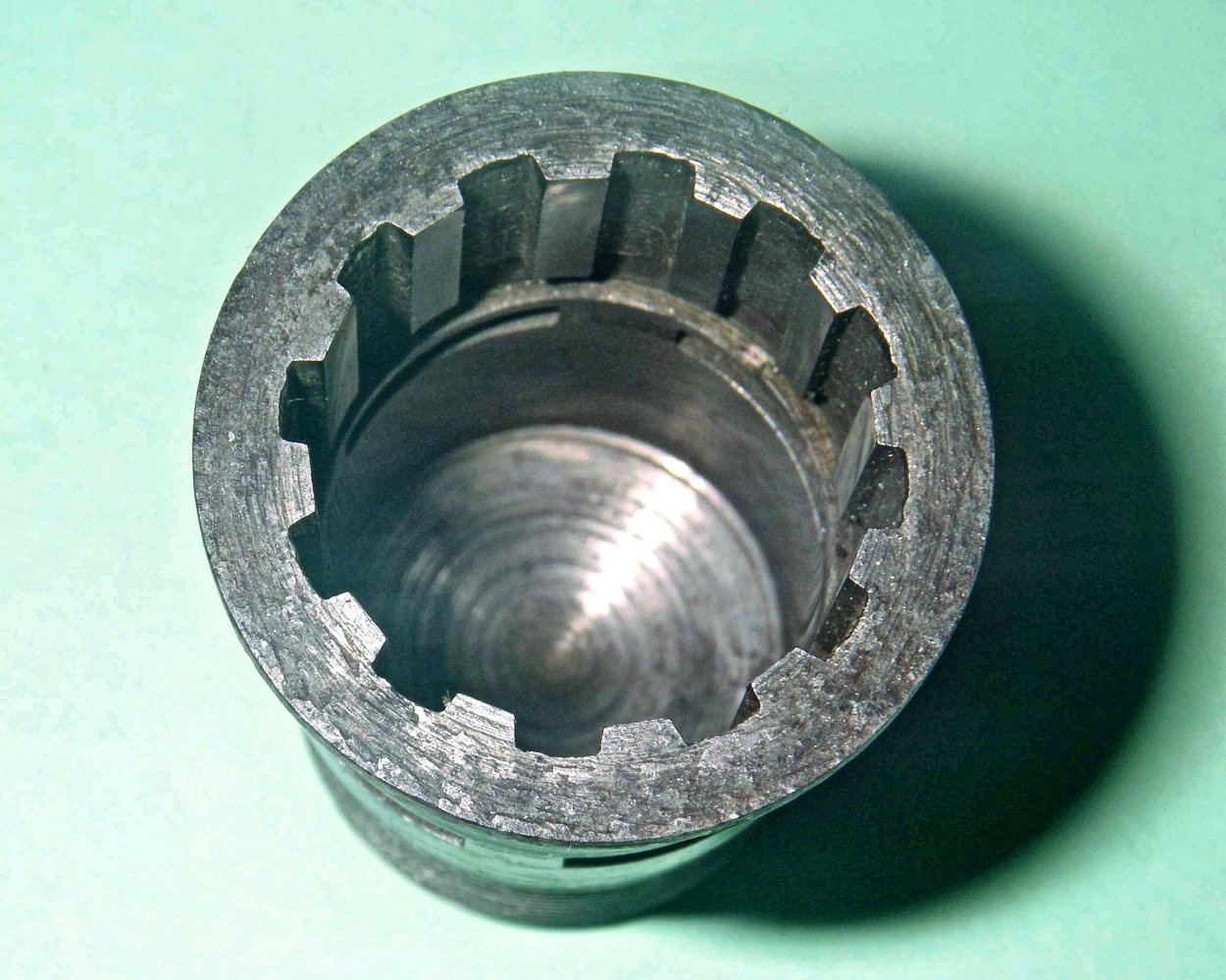 such an engine, please get in touch either directly or through the blog site - I'll be most grateful! Conversely, if you do not have such an engine, there's no need to contact me - silence will be taken as a "no"!! I don't want to clog my cyber-world with negative reports!
such an engine, please get in touch either directly or through the blog site - I'll be most grateful! Conversely, if you do not have such an engine, there's no need to contact me - silence will be taken as a "no"!! I don't want to clog my cyber-world with negative reports! 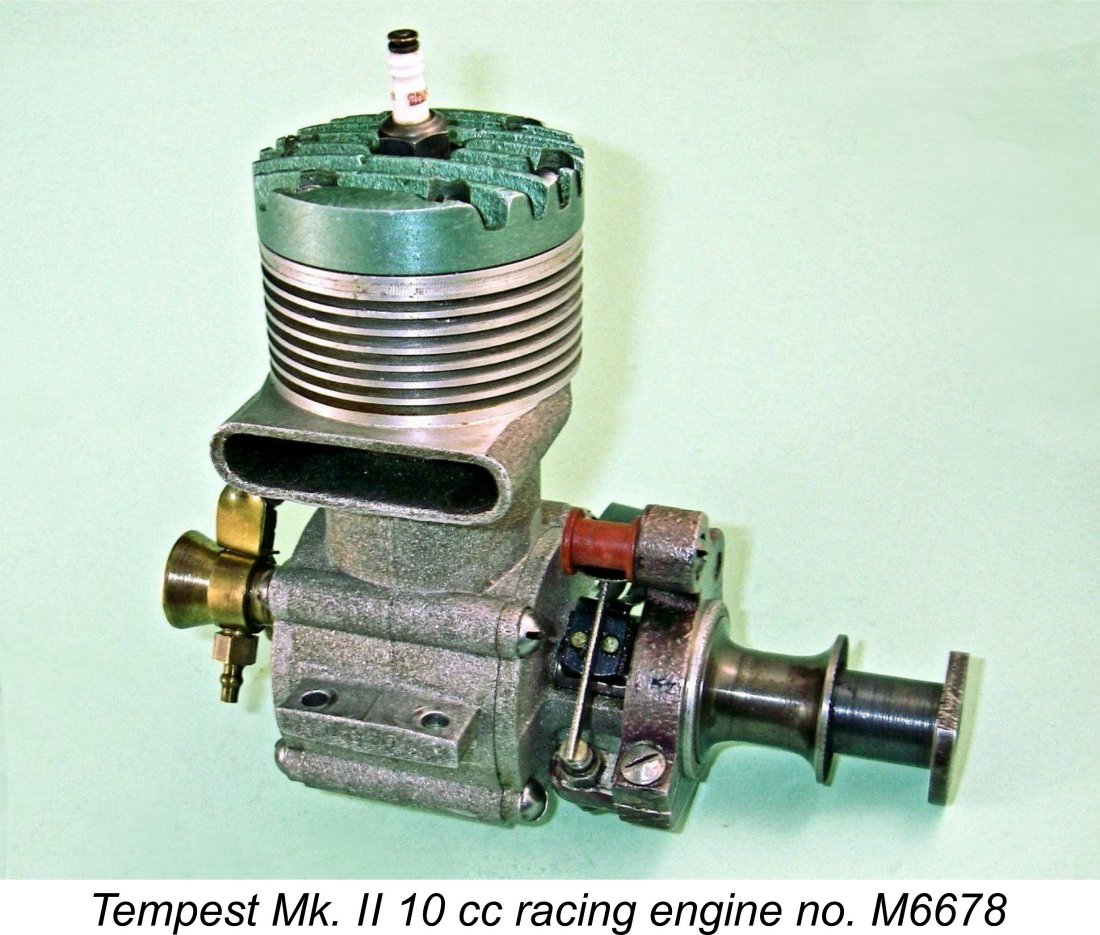

 We only learned of this test as a result of our Aussie mate Derek Butler's initiative in posting a number of issues of "Model Aircraft" from 1948 on the Vintage Glow thread in the RC Groups forum. The Reeves test appeared in the November 1948 issue of the magazine. Thanks, Derek!! Generally speaking, Chinn's report confirmed the findings of both myself and Maris within the range of variance to be expected from three independent tests using different examples of the same hand-made engine running on different fuels at different times and places. The test is now there to be read in the Testing section of the article on this website about the
We only learned of this test as a result of our Aussie mate Derek Butler's initiative in posting a number of issues of "Model Aircraft" from 1948 on the Vintage Glow thread in the RC Groups forum. The Reeves test appeared in the November 1948 issue of the magazine. Thanks, Derek!! Generally speaking, Chinn's report confirmed the findings of both myself and Maris within the range of variance to be expected from three independent tests using different examples of the same hand-made engine running on different fuels at different times and places. The test is now there to be read in the Testing section of the article on this website about the 